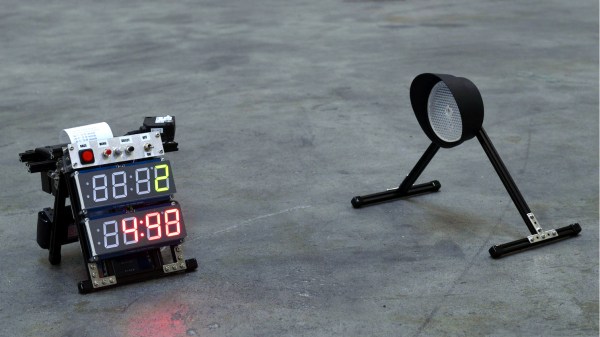Swimming is a great way to exercise, both for the cardiovascular benefits and the improved muscle tone. However, while he’s a fan, [Peter Quinn] sometimes finds it hard to keep track of how far he’s gone when he gets in the zone. Obviously, the solution is an electronic lap counter, which [Peter] promptly set about creating.
The build is based around an ultrasonic distance sensor, which is triggered when it detects a swimmer approaching the end of the lane. It’s run by an Arduino Nano, which is also set up to announce the accumulated distance with a speech synth library. [Peter] notes there have been some stumbling blocks thus far, necessitating modifications along the way. Water ingress into the ultrasonic sensor has required the installation of a protective shroud, while battery operation has required a module to properly handle the lithium-polymer battery.
While we might hesitate to bring a takeaway container full of wires, circuit boards and an LED display to a public pool for fear of being deemed a bomber, the basic bones of the project are a great way to approach the problem. There’s plenty of scope to implement laptiming too, as we’ve seen in other sporting builds!












